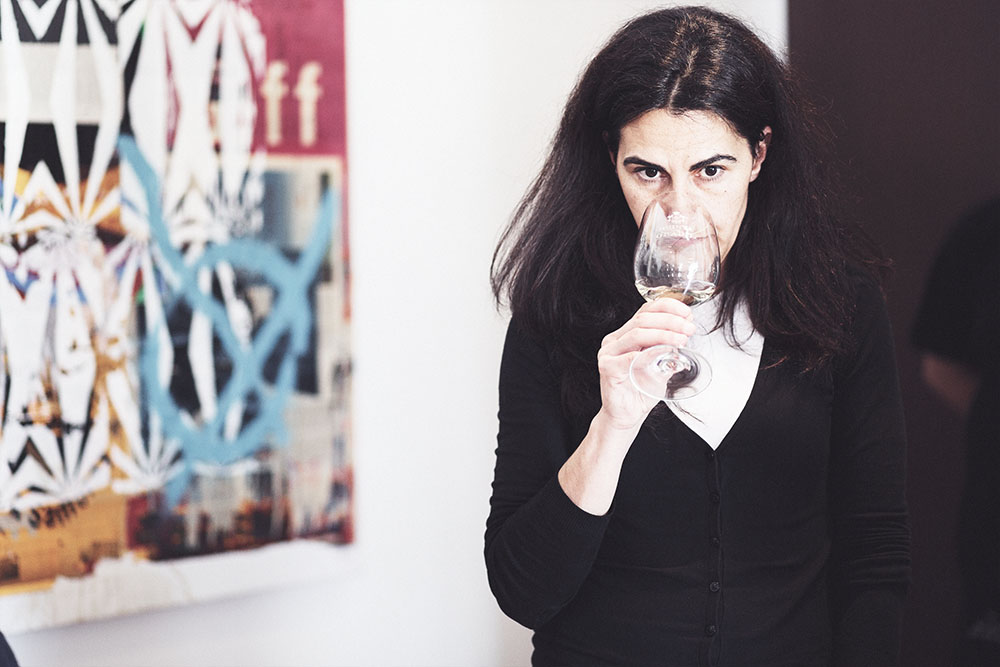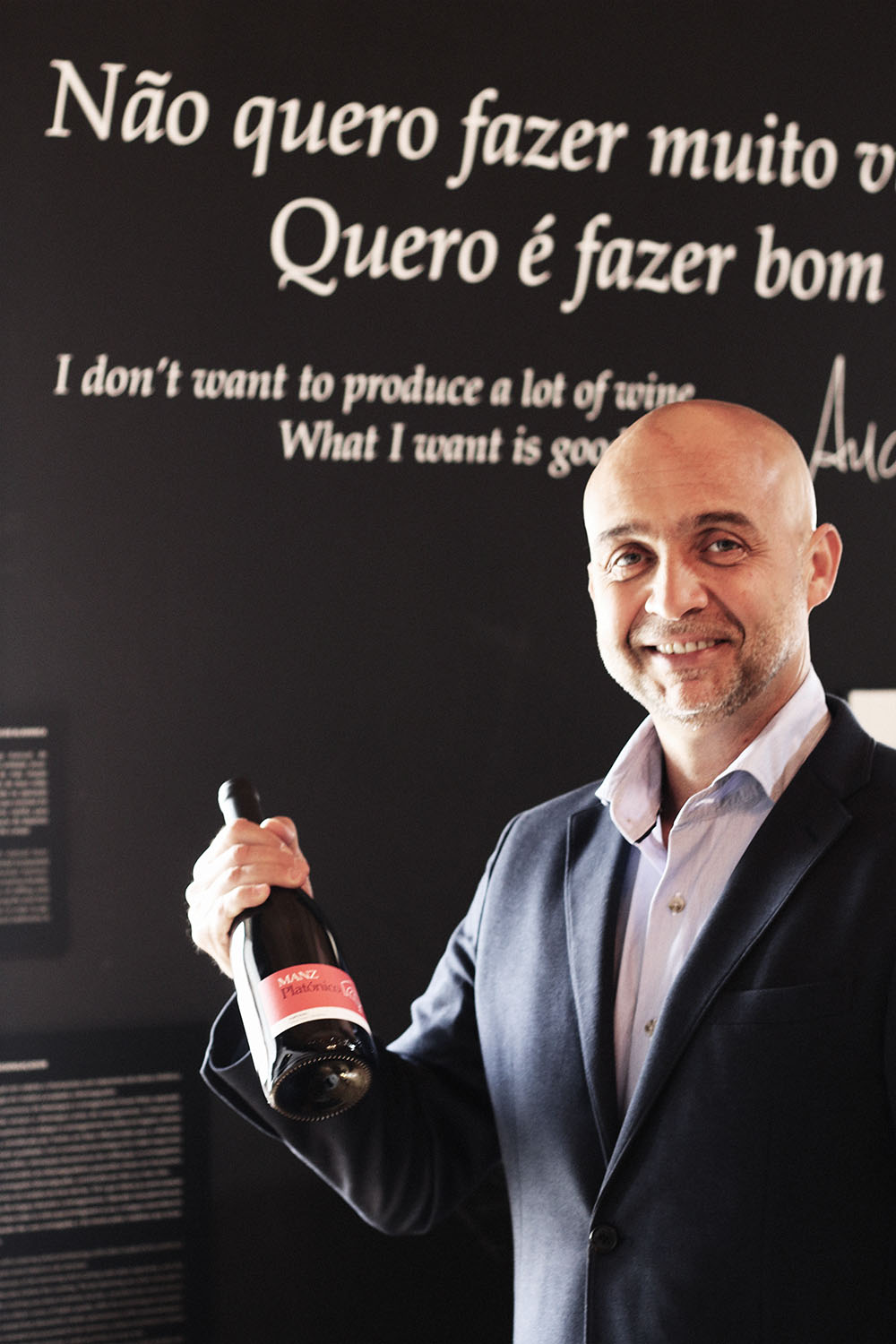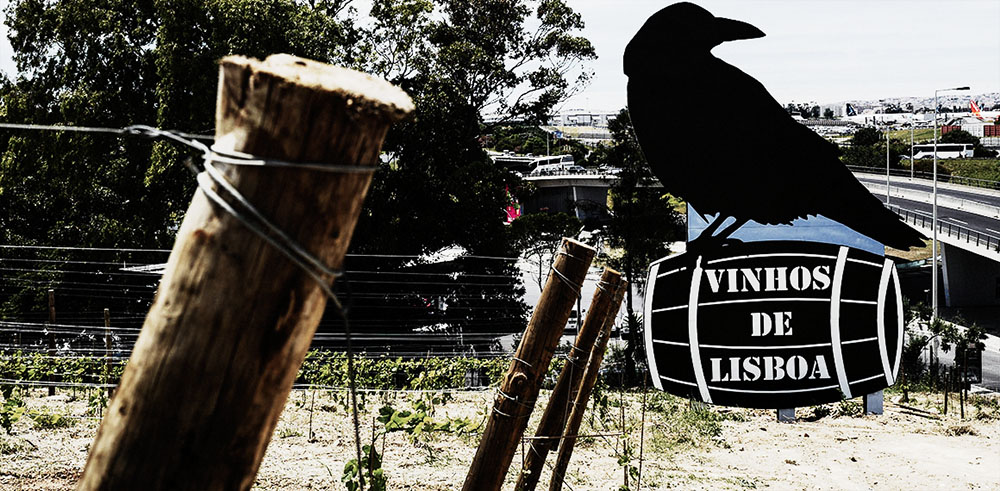Think Portugal and chances are your mind will turn to Port, or, perhaps, to newly emerging table wines from the Douro and elsewhere.
However, lesser known Lisboa is the country’s third-largest producing region by volume. And while still somewhat under the radar, its wines are on the rise. The ascent is driven in part by a burgeoning food and wine tourism. And it mirrors the city of Lisbon’s arrival as one of the world’s hottest tourist destinations.
Steeped in history, the region around its namesake city and largest urban centre, used to be known as Estramadura. The more celebrated wines here were made in the miniscule sub-region of Colares, with Ramisco (red) and Malvasia (white) vines planted in impossibly challenging conditions — in Atlantic sand dunes. However, erosion and extensive real estate development have taken their toll and those wines are now even harder to find than before.
Although long overshadowed by Porto, Lisbon’s wine connections run deep. Of its major players during the last few centuries, one man in particular left a lasting and significant legacy.
Driving in from the airport, it’s likely you’ll arrive via the Praça Marques do Pombal, where a towering monument and lofty statue honours the man who most shaped modern-day Lisbon in the aftermath of the catastrophic earthquake and tsunami that devastated the city in 1755.
The well-travelled Marquis had lived and worked in London and Vienna as Portugal’s ambassador. Wine wise, it was he who laid the framework for the world’s first demarcated wine region, when he established the Companhia das Vinhas do Alto Douro in 1756. It regulated and protected the Port trade, and initiated a demarcated system of quality — one that predated the French equivalent by almost 200 years.
Even though modern-day Portugal can trace its winemaking traditions back a few thousand years, the country has really only made its mark on the wine world in the last few centuries. While the story of port and the country’s long association with the British (through the 1373 Treaty of Windsor) is well known, the more recent story of table wine, which now enjoys considerable success in regions like Dao, the Douro and Alantejo is not so well known.
Portugal’s modern table wine industry found its beginnings under the dictatorship of prime minister António de Oliveira Salazar. The Salazar regime (1933–1974) established cooperatives on a grand scale. The emphasis was very much on quantity rather than quality, with demand driven by exports to former outposts of the once vast empire.
Only after 1975, when the regime was overthrown during the peaceful Carnation Revolution, did things really start to change, propelled further by Portugal’s 1986 entry into the European Union.
It’s that legacy of bulk wine that Lisboa is now striving to leave behind. As wineries continue to invest heavily in their vineyards and production facilities, the results are ever improving and occasionally impressive.
As Lisboa modernizes, various influences are shaping winery styles and philosophies — including the choice of grapes.
While many concentrate on indigenous varieties, others are planting international grapes, sometimes in order to appeal to major buyers overseas, but often because some find a combination of indigenous and modern varieties make for more interesting blends.

The bottom line is that in Lisboa you can discover the entire (and sometimes overwhelming) range of Portugal’s indigenous grapes, as well as some interesting international New World offerings. And everything in between.
In short, Lisboa is anything but homogenous.
Lisboa is home to a broad spectrum of producers, from mega, modern co-ops to historic family quintas and boutique producers. However, one common theme persists: all are shifting their focus towards quality — often on a dramatic scale — and many have embraced the use of international varieties.
The shift away from volume to more focused, quality-driven wines is perhaps nowhere more apparent than at Quinta do Gradil, whose new owners commenced its transformation in 1999. The original estate and imposing quinta (awaiting restoration) date back to the late 15th century (actually owned for many years by the Marquis de Pombal and his descendants). The current owners are driven to modernization at every level and have heavily invested in new technology, as well as an impressive, top-level restaurant and wine bar.
Winemaking ranges from stand-alone indigenous varieties — such as an impressive, crisp and clean, mineral-toned Quinta do Gradil Viosinho 2015 (white) and a shiste-y keenly focused Albariño and Arinto blend — to the Quinta do Gradil Reserva White 2015 blend of Chardonnay and Arinto, with complex layers of citrus and grapefruit, underpinned by mineral notes filled out with well-balanced French oak.
Aragonez and Castelao combine for Mula Velha 2016, an easy-drinking, approachable red blend, while the Quinta do Gradil Reserva reds include a plush and rounded 2015 hybrid blend of Touriga Naçional, Syrah and Alicante Bouschet, as well as an impressive, stand-alone, powerful, peppery and smoky, long-finishing Syrah 2015. The kicker — a not uncommon occurrence in Lisboa — turns out to be a very polished, leesy and toasty Méthode Traditionelle sparkler of Arinto (70 percent) and Chardonnay.
Quinta do Sanguinhal started its push for quality even earlier. This long-established, family-run winery started producing in the early 1900s and moved to bottled as opposed to bulk wines some 40 years ago. Sanguinhal is part of a company that comprises its namesake wine as well as the nearby estates of Quinta de Sao Francisco (where all the company’s wines are made and bottled) and Quinta das Cerejeiras, which has been exporting bottles since the mid 1850s. Notably, as a long-time distillery, Sanguinhal also offers an impressive range of spirits, including the regional specialty, aguardiente.
Through its various brands, Sanguinhal epitomises the region’s new and old styles, although the emphasis is more towards indigenous varieties, occasionally with modern blends or stand-alones.
Some of the best examples include a Quinta do Sanguinhal Chardonnay and Arinto blend, half fermented in French oak but aged in stainless steel, and the crisp, mineral-driven Quinta de San Francisco Obidos DOC 2016, from clay soils.
Sanguinhal spans a range of regional tastes, from the fruity and quaffable Cerejeiras Regional Tinto blend (of Castelau, Touriga and Aragonez) to the impressive Cerejeiras Grand Reserva, a blend of Castelao, Touriga and Aragonez that balances emphatic new oak with plushness and freshness underscored by a natural acidity (2011).
Easy-sipping Sottal is one of Lisboa’s perennial award winners. It was conceived as an alternative to Vinho Verde, with the grapes picked early and the alcohol kept low (9.5% abv). The orange-toned, fruity but zippy blend of Moscatel, Arinto and Vital is ideal with local seafood, such as clams and shrimp. It also makes a perfect patio sipper.
Quinta do Sanguinhal is among the more successful at concentrating on indigenous grapes while employing international varieties where the taste profile can benefit. The family are also gracious hosts who run a popular visitor program, featuring home-style cuisine served under giant ancient presses beside the original lagars.
More than a few Lisboa wineries are very much labours of love, fuelled by a deeply engrained passion for the region and culture — as in the case of Quinta de Sao Sebastiao. This boutique winery, founded in a historic 18th-century Quinta on the site of a former monastery and one-time Roman village, combines the owner’s love of both wine and horses. Tastings are given overlooking a private dressage show ring, where Lipizzaners step in majestic, breathtaking tandem.
A small portfolio of premium offerings, Sao Sebastiao’s wines are also very much in synch, considered and well-crafted drops that blend international varieties with indigenous grapes as appropriate. However, the winery, whose stated aim is to preserve regional characteristics, works tirelessly with local growers to supply indigenous varieties as much as possible.
Lisboa is anything but homogenous.
Arguably the most dogged example of reviving indigenous varieties is found at Manzwine, where former soccer star goalie André Manz inherited some 200 different strains of a variety when he purchased a vineyard in the ancient village of Cheleiros, not far from Lisbon. The village, it turned out, once enjoyed a significant reputation for grapes grown on its surrounding clay and limestone slopes. The long-forgotten variety is Jampal — defined by structure, minerality and bright acidity and a slightly saline hint — which Manz has elevated to cult status, as its the only known planting in the world.
Maybe it flows from the owner’s world view (Manz is Brazilian by birth) but the wines and packaging are among the region’s more progressive and edgy. Nor do his efforts stop in the vineyard. Manz has also transformed the upper floor of the old building that houses the tasting room into a tiny perfect wine museum.
The choice between indigenous or international grapes can also be obvious. At Quinta do Rol (which also operates a hotel and equestrian centre) the emphasis is on sparkling wines with a deliberate (and very successful) nod to Champagne. Yet, although Pinot Noir and Chardonnay may be a given, the winery also focuses on white wines, such as regional varieties Arinto and Alvarinho, as well as Pinot Gris and Sauvignon Blanc.
International grapes also enjoy a certain cachet in the culture of Lisbon’s wine bars, where it seems there’s plenty of interest in trying wines like Europe’s most westerly planting of Pinot Gris (from Lisboa), among others.
Some of the impetus for international-only wines flows from the larger producers’ desire to cosy up to export driving monopolies (particularly in Scandinavia and Canada), who don’t necessarily want to do the legwork to educate consumers about Portuguese varieties.
However, the Portuguese (who were arguably one of the world’s greatest seagoing and trading nations) remain a sensibly pragmatic bunch. With few exceptions, most winemakers understand the opportunity that judiciously using international varieties presents, without usurping the very valid and hard-won place of pride enjoyed by their own — and increasingly well-made — indigenous varieties.

Quinta das Cerejeiras Reserva 2011, DOC Obidos ($35)
A blend of Castelao, Touriga Naçional and Aragones produced by Sanguinhal. Forward notes of vibrant red and black fruits, cocoa, vanilla, leather and spice notes before a full-bodied but elegant palate with well-managed oak and well-integrated tannins. Still showing freshness and remarkable youth with purity of fruit and excellent length.
Casa Santos Lima Reserva 2013, Vinho Regional Lisboa ($20)
A long-running, predominantly export winery established in the early 19th century, undergoing extensive modernization since 1995 and making wines from most regions on a large scale. From older plantings of Touriga Naçional, Alicante Bouschet, Tinta Roriz and Syrah, fresh and lively entry of vibrant red and black berry notes before a structured mid palate defined by fresh acidity, cassis and spice notes, with Syrah showing black pepper and spice through a lengthy end.
DFJ Grand Arte Alicante Bouschet 2014, VR Lisboa ($30)
From a historic producer with its own cooperage and a dramatic late 19th-century building. Intense, deep garnet in glass, forward dark berry notes. Medium- to full-bodied palate of black cherry and damson is quite rounded with good structure and fresh acidity through a lengthy, spicy finish.
Quinta de Sant’Ana Pinot Noir 2015, VR Lisboa ($25)
From a delightful Quinta and small farm boutique hotel in Mafra, just 12 kilometres from the Atlantic, with cool mornings and hot afternoons. Made from grapes from 4 contrasting vineyards. Hand-picked and whole-bunch fermented in stainless steel before 10 months in 4-year-old barrels. Lively wild cherry and forest floor notes up front with contrasting sweet and savoury notes on a light- to medium-bodied palate defined by good acidity, freshness and elegance.
Villa Oeiras Carcavelos 1997, Carcavelos DOC ($60)
Fortified sweet wine from a tiny remaining storied portion of vineyard in greater Lisbon near Cascais, barely 1,000 metres from the ocean, with windy mornings, sunny days and night-time humidity. From clay and limestone soils. Several varieties fortified by spirit from Lourinha. Caramel and nutty notes, very Oloroso-like with raisin flavours and seamless integration of alcohol, fruit and acidity with a slightly savoury streak. Barrel sample due now for bottling.
Quinta do Rol Extra Brut Grande Reserva 2012, VR Lisboa ($40)
Traditional method made with 100% Chardonnay. Fine bubbles and a persistent mousse with lifted brioche and toast before a leesy palate. Complex and layered with mouth-filling, creamy texture and a formidable, structured finish.
Quinta de São Sebastião Reserva 2014, VR Lisboa ($60)
A blend of Merlot, Touriga Naçional and Syrah, non-irrigated and hand-harvested. Pretty garnet in the glass with fresh red berry, vanilla and spice notes before a full-bodied, supple and elegant palate with a markedly savoury and mineral core, approachable tannins and lingering toasty notes.
Manzwine Dona Fatima Jampal 2015, VR Lisboa ($45)
The only known planting of this variety worldwide. Lifted mineral and citrus before a slightly saline palate of medium intensity with excellent acidity, remarkable minerality and shiste notes with juicy acidity. 4 to 5 months in oak adds body and texture. Age-worthy.
Vale Zias Syrah 2013, VR Lisboa ($30)
Small family-owned former bulk producer now focused on bottled wines and small hospitality tourism. Well-defined varietal aromas of meaty, gamey notes and fresh, crushed berries, before a slightly chalky palate with vibrant dark cherry notes, fresh fruit flavours and lingering peppery notes.
São Mamede da Ventosa Don Mamede Red 2016, VR Lisboa ($15)
Eco-conscious co-op in transition to modern techniques. Blend of Castelao, Syrah and Aragonez. Upfront crushed red berries, medium-bodied cherry and a high-acid palate with some earthy notes and firm tannins.
Quinta do Gradil Reserva White 2015, VR Lisboa ($18)
A blend of Chardonnay and Arinto sports appealing tropical and citrus notes before complex layers of grapefruit and citrus with waxy undertones wrapped in bright acidity with excellent mouthfeel and lengthy finish.

